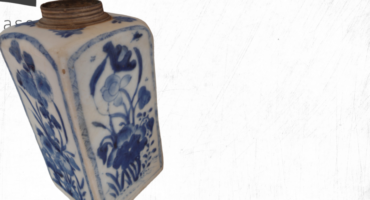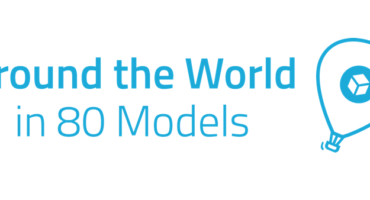Hop on board as we continue our journey Around the World in 80 Models! We began our itinerary at Sketchfab headquarters in New York and are working our way through Europe, Africa, Asia, Oceania, South America, and North America. To catch up on past destinations, check out the rest of the Around the World in 80 Models series.
This week we jet north to Texas, where Evelyn Billo and Robert Mark take us inside Jaguar Cave to examine one of its unusual pictographs.
Hudspeth County, Texas: Jaguar Cave
We are Evelyn Billo and Robert Mark, sole proprietors of Rupestrian CyberServices, and we professionally document rock art sites and other archaeological features.
We began using photogrammetry to document rock art panels, rock alignments, and geoglyphs in 2012. Our 3D models are created using scanned 35mm slides and digital images, many of which are taken from our UAV drone.
We use Nikon DSLR cameras and DJI Phantom quadcopters. When appropriate, we use Photoshop and ImageJ with Dstretch to enhance faded designs. Models are generated with Agisoft PhotoScan, and occasionally with other software packages when GIS orthophotos are required.
This pictograph 3D model from Jaguar Cave (Hudspeth County, Texas) was created from slides taken on a field trip many years ago. The slides were not taken with a model in mind, and were challenging to shoot while lying on our backs as can be seen in the figure 1 photo by Margaret Berrier. Our photographs were taken with enough overlap to allow a mosaic of individual motifs. A complex horned and feathered serpent example is shown in figure 2 (enhanced image).
Our contribution to Sketchfab’s Cultural Heritage showcase “Around the World in 80 models” is of a possible therianthrope (human and animal combination). Depictions have been known in Paleolithic European cave paintings many millennia old. The Jaguar Cave painting in white of a wolf (or coyote)/human is approximately two-meters long and on an irregular surface of the low-ceiling shelter. It is painted over an earlier smaller canine figure. These pictographs are attributed to the Jornada Mogollon Culture which flourished in south central New Mexico, west Texas, and northern Chihuahua, Mexico from approximately AD 600-1400. This painting was described in a 1974 publication as a mother and baby coyote that was difficult to photograph due to the curved surface. Our model achieves a perspective and detail that allows us to suggest another interpretation and to appreciate the skill of the person who painted the design that incorporates a natural depression for the eye, raised areas for head, foreleg, and body contours. A natural depression behind the forepaw helps define the interface between the animal and seated human torso.
We have other pictograph examples from Jaguar Cave posted on Sketchfab, including models of the horned and plumed serpent, a possible bear, and the possible jaguar painting for which the cave was named.
To see more of Evelyn and Robert’s models here on Sketchfab, check out their profile!





